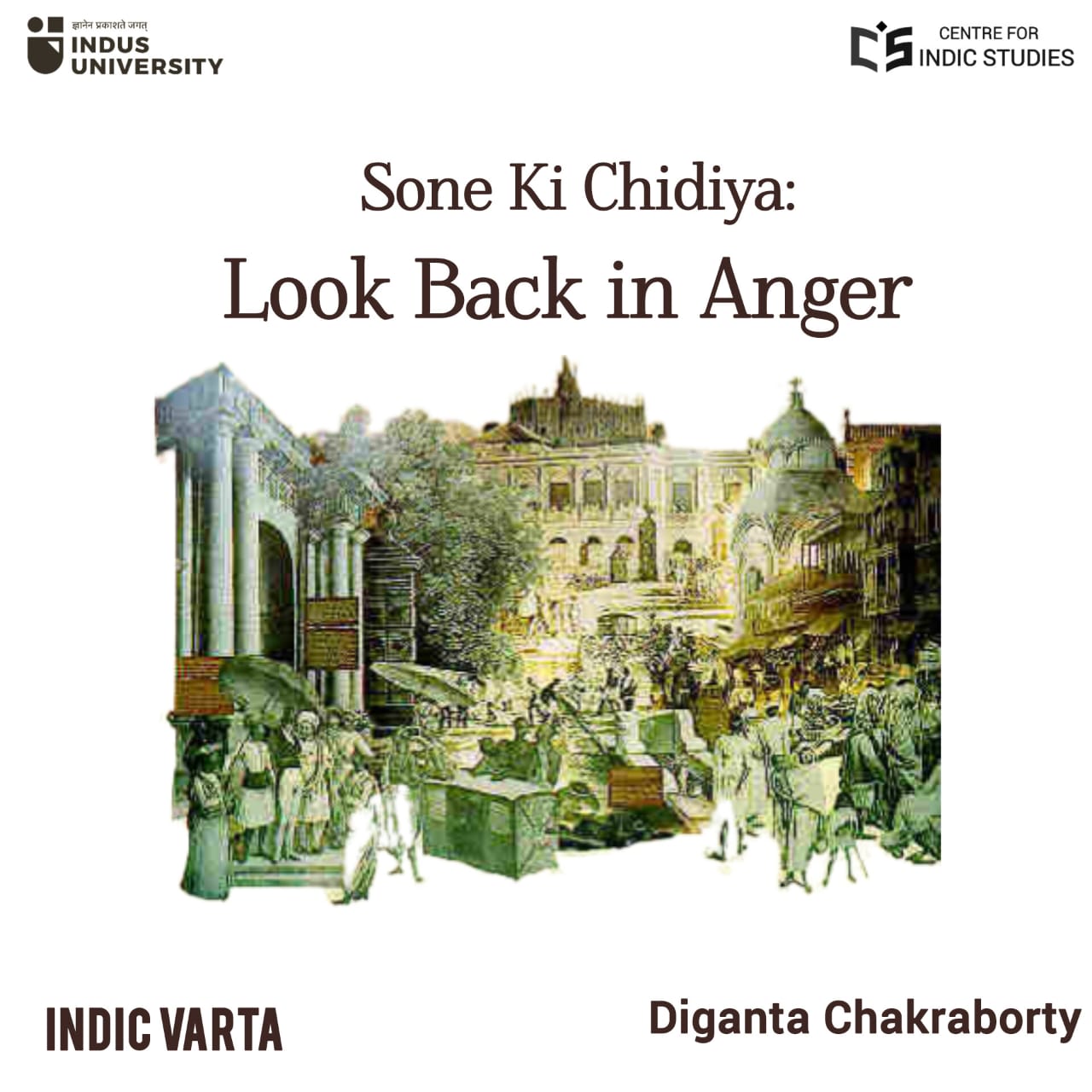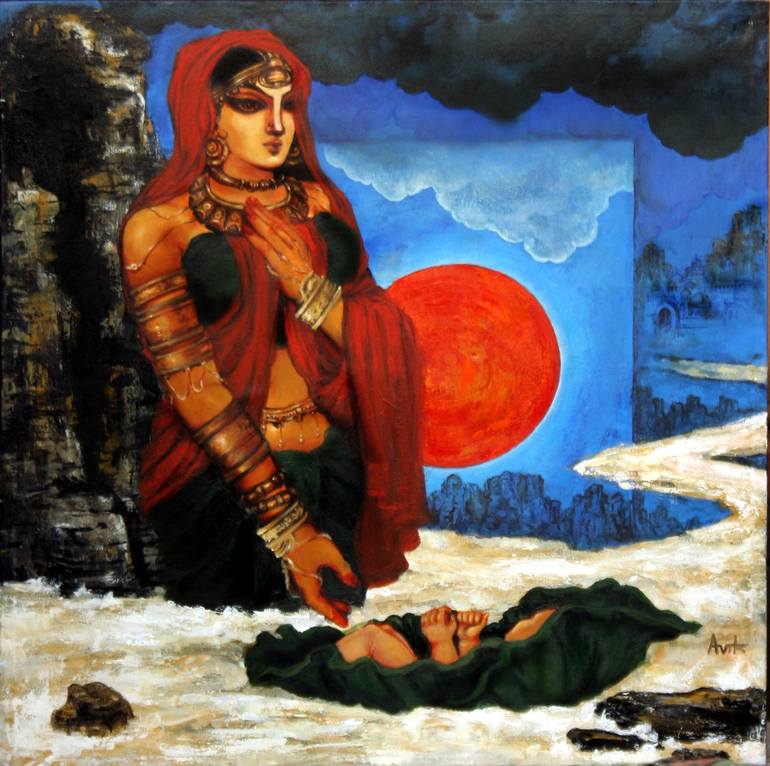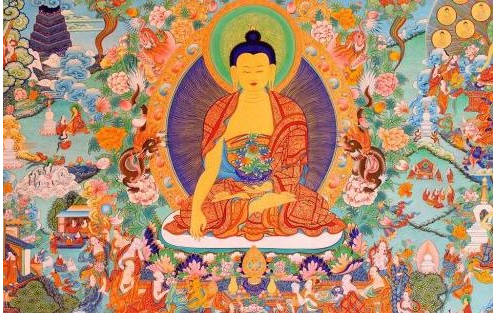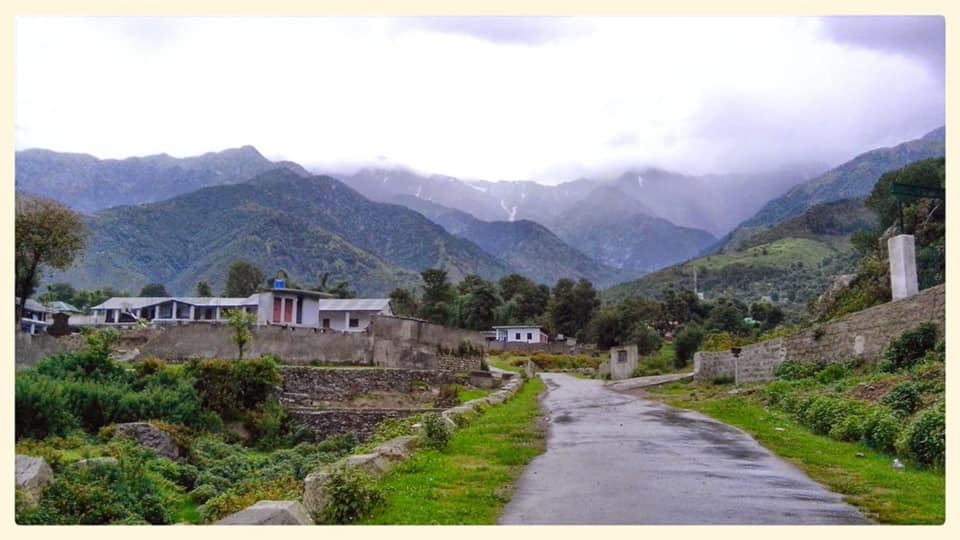- Visitor:70
- Published on: 2025-04-02 05:13 pm
Sone Ka Chiriya: Look Back in Anger
Through meticulous examination of British reports, administrative records, and travelogues, Dharampal disproves the colonial assertion that Bharat was backward before European rule. His works demonstrate that Bharat, until at least the 18th century, was thriving in education, manufacturing, trade, and social organization, making it one of the most prosperous civilizations of the time. To point to their widespread presence of schools in Indian villages, Dharampal quotes Sir Thomas Munro, the Governor of Madras: “Every village had a school”. Dharampal's research, based on British surveys from the early 19th century, reveals a robust network of indigenous educational institutions across India. For instance, the Madras Presidency Indigenous Education Survey (1822–25) reported 11,575 schools with 188,650 students. Similarly, William Adam's reports from Bengal and Bihar (1835–38) estimated approximately 100,000 village schools, averaging about one school per village. These findings suggest that indigenous education was more widespread in India than in contemporary England during the same period.

On August 15, 1947, we finally achieved our long-awaited independence. However, the partition shattered our dream of 'Akhanda Bharat'. The successive governments, along with the way our education system was designed, deeply instilled the belief that Bharat had nothing of its own. As a result, so-called scholars often depict the Mughal and British invasions as a blessing for the country. But what does proper history say? History says that Bharat had a rich history. The phrase 'Sone Ka Chiriya' (The Golden Bird) has long been associated with Bharat, reflecting its immense wealth, cultural grandeur, and economic prosperity in ancient and medieval times.This metaphor has been widely used by both Bharatiya and foreign historians to describe India's historical affluence before colonial rule. Bharatiya scholars like Dharmapal proved with proper sources that Bharat was very advanced before the rule of colonial invaders. His seminal works, such as The Beautiful Tree and Indian Science and Technology in the Eighteenth Century, expose the deliberate erasure of India’s past grandeur by British historians and policymakers. Through meticulous examination of British reports, administrative records, and travelogues, Dharampal disproves the colonial assertion that Bharat was backward before European rule. His works demonstrate that Bharat, until at least the 18th century, was thriving in education, manufacturing, trade, and social organization, making it one of the most prosperous civilizations of the time. To point to their widespread presence of schools in Indian villages, Dharampal quotes Sir Thomas Munro, the Governor of Madras: “Every village had a school”. Dharampal's research, based on British surveys from the early 19th century, reveals a robust network of indigenous educational institutions across India. For instance, the Madras Presidency Indigenous Education Survey (1822–25) reported 11,575 schools with 188,650 students. Similarly, William Adam's reports from Bengal and Bihar (1835–38) estimated approximately 100,000 village schools, averaging about one school per village. These findings suggest that indigenous education was more widespread in India than in contemporary England during the same period.
Ancient Indian mathematics has been a subject of great admiration and extensive research by foreign historians and scholars. The contributions of Indian mathematicians, particularly in algebra, arithmetic, and geometry, have been acknowledged by experts from around the world. Stanley Olpart, an eminent historian and professor at the University of California, writes in his book, An Introduction to India: "Mathematics is the science to which our decimal system, place notation, the numbers 1 through 9, and the ubiquitous 0 are all major Indian contributions to global knowledge. Without these, our modern world—encompassing computer science, earth-launched satellites, microchips, and artificial intelligence—would have been impossible." An eminent historian of mathematics, George Gheverghese Joseph, in his book, The Crest of the Peacock: Non-European Roots of Mathematics (1991), extensively discusses India’s role in shaping global mathematics. He highlights the Kerala School of Mathematics and the works of Madhava (c. 1340–1425), who developed concepts akin to calculus centuries before Newton and Leibniz (Joseph, 1991). In his book he wrote,"The Brahmanas, the second great division of Vedic literature, have been described as practical handbooks for those conducting sacrifices. Of these, an important source of early mathematics, which will be referred to later, is the Satapatha Brahmana (Brahmana of a Hundred Paths)."
Also foreign historians such as A.L. Basham, William Dalrymple, Will Durant, and Vincent A. Smith have extensively examined India's socio-economic and cultural history, often acknowledging its vast wealth, knowledge systems, and contributions to global civilization. The British historian A. L. Basham, in his seminal work The Wonder That Was India (1954), described ancient India as an advanced civilization with remarkable achievements in philosophy, mathematics, medicine, and trade. Basham emphasized that India’s prosperity was not just material but also intellectual, making it a cradle of civilization.
The Scottish historian William Dalrymple, known for his works on Mughal and colonial India, provides a nuanced view of India's historical wealth and the impact of British imperialism. In his book The Anarchy (2019), Dalrymple details how the British East India Company systematically drained India’s resources, leading to its economic downfall. He contrasts the wealth of Mughal India with the poverty that followed British exploitation, highlighting how the subcontinent was transformed from a flourishing economy to a land of famines and deindustrialization. The American historian and philosopher Will Durant, in his book, The Case for India (1930), presents a scathing critique of British colonial rule. He argues that India, once a global economic power, was systematically looted by the British, who destroyed its industries, particularly its renowned textile sector. Durant provides a historical comparison, stating that before British intervention, India was among the world’s leading producers of fine fabrics, including the famed Dhaka muslin. He wrote, "India was a far greater industrial and manufacturing nation than any in Europe or Asia, producing textile, metal works, jewelry, precious stones, pottery, architecture. She had great merchants, businessmen, ship building— nearly every kind of manufacture known to the civilized world was already in India." In his book, The Case For India written in 1930 he wrote, "When the British came, India was politically weak, and economically prosperous." So, It is evident that he has always acknowledged the economic prosperity of Bharat.India was a leader in wealth accumulation and economic prosperity. Historical records, including accounts by Greek, Chinese, and Arab travelers, indicate that India produced around 25% of the world’s GDP during the first millennium CE. Cambridge historian Angus Maddison’s work shows that India’s share of world income shrank from 22.6% in 1700—almost equal to Europe’s share of 23.3%—to 3.8% in 1952. Professors David Clingingsmith and Jeffrey G. Williamson of Harvard University, in their study India’s De-industrialization in the 18th and 19th Century, discuss the profound impact of 200 years of British colonial rule on India’s economy. They note, “India was a major player in the world export market for textiles in the early 18th century, but by the middle of the 19th century, it had lost all its export market and much of its domestic market. While India produced about 25 percent of the world’s industrial output in 1750, this figure had fallen to only 2 percent by 1900.”
British historian Vincent A. Smith, in his book The Oxford History of India (1919), acknowledged India's historical prosperity but interpreted it through a colonial lens. While he detailed the economic grandeur of the Mauryan, Gupta, and Mughal empires, he also sought to justify British rule as a stabilizing force. His work exemplifies how colonial historiography often portrayed British intervention as beneficial, despite substantial evidence of its detrimental impact on India’s economy. Nevertheless, Smith could not entirely overlook India’s past wealth and achievements. He highlighted the sophisticated urban planning of Harappa and Mohenjo-Daro, the intellectual advancements of Nalanda and Takshashila, and the architectural splendor of the Mughal era. Despite his colonial bias, his accounts inadvertently reinforce the notion that India was indeed the Sone Ki Chidiya—a land of immense wealth—before being plundered by foreign rulers.
- 35 min read
- 0
- 0










